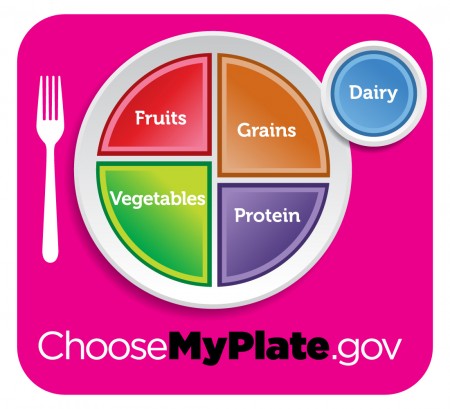By Janelle Sanchez, RD, CLEC, clinical dietitian at CHOC Children’s
Nutrition can improve your child’s academic performance, as well as provide the energy needed for an entire school day. Check out these helpful tips in planning for back to school lunches, or any meal! 
- Consider choosing the least busy day of the week to organize your menu for school lunches. This can help with dinner prepping too!
- Shop together — choose a few healthy options for each food group. This is helpful to get picky eaters to try new foods, and actually eat the meals that you both picked together.
- Prep ahead and give your child an age-appropriate task, such as washing and cutting up fruits and vegetables. Portion out items into baggies for easy grab and go items. Consider freezing some of the items the night before to act as an ice pack.
Here are some good examples of foods from each food group:
Protein
Turkey roll ups, chicken, eggs (try hard boiled), tuna salad, peanut or nut butters, beans, lentils, hummus, tofu and string cheese.
Protein is important for growing children as it is a building block for bones, muscle, cartilage, skin and blood.
Grains
100 percent whole grain bread/bagel/bun, tortilla, English muffin, rice, pasta, crackers, cereal, granola bars, rice cakes, pretzels and pita.
Compare food labels — Choose whole grains, items higher in fiber and lower in sugar for better nutrition and to keep your kids fuller longer, to prevent over eating.
Fruit
Fresh fruit (strawberries, watermelon, apple slices, orange wedges, peaches, grapes, pineapple squares, and kiwi), fruit leathers, packaged fruits in 100 percent juice, and 100 percent fruit juice boxes.
Fruit are important sources of many nutrients, including potassium, fiber, vitamin C, folate (folic acid) and phytochemicals. Choose whole fruits more often, and juice occasionally.

Vegetables
Carrot sticks, broccoli, sweet potato slices, beets, spinach, peas, bell peppers, cucumber, tomato and celery.
Choose red/orange vegetables containing Vitamin C. Green vegetables will boost your Fe intake. Blue/purple vegetables provide antioxidants that may protect against cancer and heart disease. Try adding a lower calorie dip (using yogurt, hummus, etc.) to pair with the veggies.
Dairy/dairy alternatives
Milk, soy milk, almond milk, cheese, yogurt, drinkable yogurt.
These are excellent sources of calcium and Vitamin D, important for building and maintaining healthy bones. Choose low fat or non-fat sources.
Fat
Avocado, olives, nuts, oils (olive oil, canola, vegetable, peanut), butter, margarine, mayonnaise, sour cream and salad dressing.
Be mindful on the portions of fat in the meals, as they are high in calories compared to protein and carbohydrates. Choose healthy fats (unsaturated fat- plant sources) instead of unhealthy fats (saturated- animal sources).
Extras/condiments: Help children learn to season foods without adding salt. Instead, try adding fresh garlic, or garlic powder, onion, cinnamon, basil, nutmeg, parsley, etc. Choose light mayo instead of regular.
Treats: Occasionally a cookie or brownie can fit in as well.
Lastly, although school nutrition programs are evolving, there is still some room for improvement. There can be a place for school meals however. Consider reviewing the meal options for the week with your children and pick the best options together.
We know that eating patterns and preferences can be influenced early in life and extend into adulthood. Let’s teach our kids what healthy meals look like to set them up for success.





